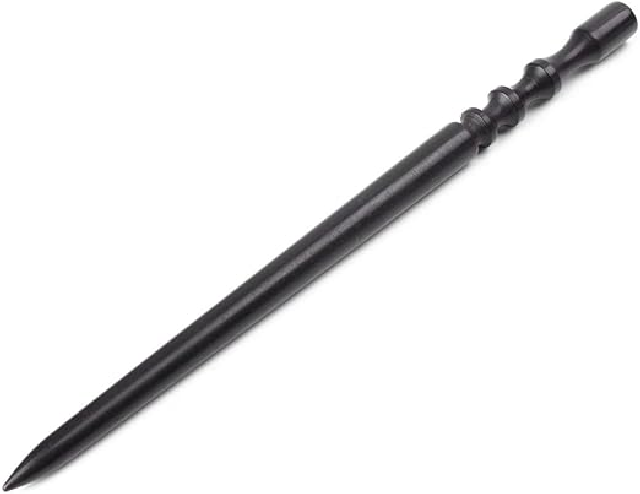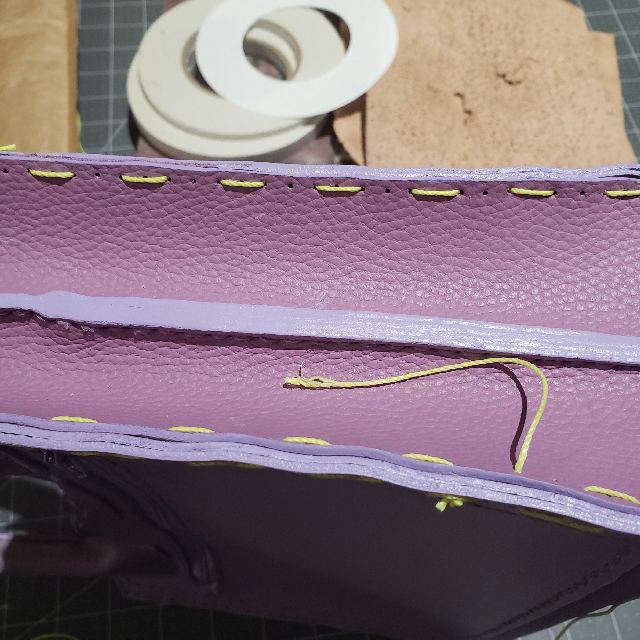-
Posts
1,283 -
Joined
Content Type
Profiles
Forums
Events
Blogs
Gallery
Everything posted by SUP
-
@DieselTech I tried books and it just did not work. Too impatient, I guess, and I think I am spoilt with getting everything in an instant online these days. I wonder how I managed all through my youth when there was no internet.! These days, I just buy patterns from Etsy that have specific features that I want to learn and that come with video. directions. @toxo I have not made the Monte Carlo but I think I get what you mean. And I agree; several items I purchase from Etsy I modified or added to, to make it my own and for convenience. I did the same to the rose I put up earlier as well - added a rosehip and sepals and veins on the leaf. On an earlier bag, I sewed all the sides like you describe above, for a bit of rigidity. But for all that, one needs experience, isn't it?. Now, I am slowly getting an idea. Earlier, I was clueless, blindly trying to find my way. Still doing the same, with just a little bit of light visible!
-
@rleather thank you for those encouraging words.
-
@DieselTech I keep feeling that there is so much to learn and just one life to do so! @toxo it is, in fact, divided into 2 compartments with that division on the gusset. It is not just a design feature. Internally, there is a central zippered compartment with two open compartments on either side. It is a very nice pattern by Dieselpunk.ro. If I make this again, I think I will make the central division inside out like you describe.
-
I used a rope and sewed the leather around it - a synthetic one so that it would not rot. I looked up rein rounder and I have no idea how to use it! Incidentally, I ordered the double sided tape from Rocky Mountain Leather Supply. Envy you your croc hide! It is usually so expensive I just skip them. I am still very far from reaching a level of using such expensive leather.
-
Thank you. And the best thing is, I got the 2 sides for a song at Tandy, about $18 each, on sale! I was shocked but snapped them up. I was also not too afraid to put a knife to them to make this. When the leather is expensive, I get stressed. @DieselTech It would not have been possible without the extensive guidance from all the people here; so many of them that I dare not start naming them because if I miss anyone that would be hurtful. Really wonderful people! @Mablung, already started thinking about it. "Phrased appropriately" is absolutely correct. Besides, 'presumably'? That is kind of you. Most of the people surely have much more expertise and skill than I do.
-
@DieselTech, I will certainly try to put up something then.
-
@DieselTech I will try one of those brands. Using double sided tape is so much easier than gluing anyway. Thank you for your kind words about the bag - I am most pleased that I learnt how to do the edges on chrome-tanned leathers. It just takes experience, since I have found no one who tells you exactly why you do certain things. There probably are people though, who have done so - the leatherworker community is incredibly helpful. I want to put up a short post here about how and why you do certain steps but I do not want to offend people who might thing I am getting too big for my boots - I just started leatherwork a year ago, so am very much a newbie.
-
@MarshalWill, @DieselTech, thank you. Both the leathers are some sort of chrome tanned leathers which are of a medium temper but the shape is not due to molding, It is the build itself.
-
Just completed yesterday. Pattern from Dieselpunk.ro, with modifications. Made this to learn how to make rounded handles, split gusset with double compartments and to learn more about zippers. Learnt that when I glue on zippers they turn out straight; use double sided tape and they unstick and pucker, at least for me.
-
@DieselTech, @MarshalWill, Thank you. I got the basic rose pattern from Etsy - Goatro - and then added the sepals, rosehip and the veins on the leaf. It is surprisingly easy to make @DieselTech.
-
Made this for my husband for Valentine's Day. I did not paint it because I do not like painted leather. I lightly sprayed just the petals with a rose perfume so that when he holds it, he will get the rose fragrance.
-
It looks fine. It is well designed and covers the trowel well. If your daughter is working in an area with red soil though, it might get a bit hidden.
-

The Vinegaroon Bit the Dust
SUP replied to Gosut's topic in Dyes, Antiques, Stains, Glues, Waxes, Finishes and Conditioners.
Why discard? Mine is all sorts of brown and red and dyes my leather perfectly black. Vinegaroon is not a dye, like other dyes. It creates the color by a chemical reaction - the acetic acid reacts with the iron to form iron acetate. Presence of iron oxides does not do anything as long as you rinse your leather thoroughly in running water to remove all the rust that may be present. It works for me. I have not dyed anything recently, else would have put up a sample here. -
@Hags, @Cattleman You get slim wooden burnishers these days which work for belt slots. I got this off Amazon a few months ago.
-
Thank you for that suggestion. @jrdunn I'll try that once I run out of the cardboard stiffener I got from Tandy. It's a huge roll.
-
@Sheilajeanne I have a pattern from Tandy - a bag displayed in a far-off corner since the 1970s, and gathering a huge layer of dust - they kindly (and looking perplexed - they don't understand why I like it, I don't understand why they don't!) took it down and let me measure it - I plan to modify the design and make it; it has some nice design features. We don't eat cereal at home, so I bought that huge roll of cardboard stiffener from from Tandy - very inexpensive - and am using that. Difficult to cut but it will probably last well. Plan to design it with Inkscape as well. It is free and my anti-virus is fine with it.. I like your idea of putting one's own decorations - not sure I am very skilled there but I can always try, I guess.
-
@billybopp yes many of the Tandy patterns are nice. Never bought a kit yet because I'm too busy drooling over leather sides and can never resist buying them and then have to use them! At lease willy-nilly I learnt to cut and design. The large stitching holes - I suspect because the kits are usually bought by new hobbyists or people who do leatherwork only occasionally, it makes stitching easier and doesn't scare them away. Many sellers do that, even on Etsy. A pet peeve of mine as well!
-
@Sheilajeanne Looks like Tandy hopes people who prefer either will buy their kits.! @Dwight I know why you laughed! There is nothing about it online! Hmmm. I wonder if anyone on this site can enlighten us...
-
@Dwight When I came across my first one, my knife ran over the ruler and ... blood sacrifice. How can we recognize these? Only when cutting? and what are they, these hard areas?
-
Thank you @Sheilajeanne I will watch out. I was just wondering whether to buy one of their kits.
-
Oh yes! Forgot that one.
-
We all have our pet peeves. I wonder if there are some that are more 'popular' as pet peeves than others. These are mine - first and foremost - finishing the edges! I don't mind veg tanned leather - that is actually simple compared to finishing the edges of chrome tanned leather. That, no matter how smooth, looks tacky. So it ends up being a beautiful product with tacky edges, at least to my eyes. And I do match colors etc. as much as I can too. Another one? Bought patterns in which the stitching holes are always too big for the recommended thread - so I match the color well and it looks like an item with lines of holes everywhere!!! Used to be cutting leather but now, with my trusty box cutter, I am delighted. My beautiful, expensive, round knives have pride of place on the wall, looking pretty... Love to hear what all of you have as pet peeves.
-
@dikman, good one. Informative.
-
@tsunkasapa, okay. This is anyway a small piece. it looks like something cut out of a larger piece.







